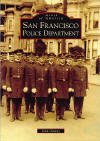11.30.04
Pictures in Our Heads
Decision-making in a Complex World
By
Betsey Culp
- Until we know what others think they know, we
cannot truly understand their acts.
- — Walter Lippman, Public Opinion
 Last night San Francisco said its official farewell
to Richard Hongisto in a memorial service at City Hall.
Last night San Francisco said its official farewell
to Richard Hongisto in a memorial service at City Hall.
Like most family gatherings, this was a time for
storytelling. Beginning with former mayor Willie Brown, some of the city’s
finest recalled the bad old days when officialdom was reserved for
straight white males. It was, after all, Hongisto — a straight white male
— who had fought most conspicuously to open up first the Police and then
the Sheriff’s Department.
One speaker, retired police inspector Rodney
Williams, described the SFPD when Hongisto joined its ranks: there were 11
African Americans in the department, all in dead-end traffic posts, or
worse. In the
mid-1960s, these officers (and one SWM) organized the Officers for
Justice; in the 1970s the group successfully sued the SFPD for race and
sex discrimination, literally changing the face of the police force in San
Francisco.
 This morning I was still thinking about the city’s
transformation as I leafed through John Garvey’s San Francisco
PoliceDepartment. ($19.99, Arcadia Publishing. Available at area
bookstores, independent retailers, on-line bookstores, or through Arcadia
publishing at
www.arcadiapublishing.com or 888 313-2665.)
This morning I was still thinking about the city’s
transformation as I leafed through John Garvey’s San Francisco
PoliceDepartment. ($19.99, Arcadia Publishing. Available at area
bookstores, independent retailers, on-line bookstores, or through Arcadia
publishing at
www.arcadiapublishing.com or 888 313-2665.)
The book is a stunning collection of photographs and
anecdotes that chronicle the activities of the department ever since its
inception during the Gold Rush. Garvey is from a police family; he himself
graduated from the SFPD Citizens Police Academy. Although his account
ranges widely, from law enforcement techniques to human interest stories —
lots of pictures of cute kids — he never forgets that, unlike other public
servants, police officers risk their lives for the safety of others. The
image on the cover depicts the funeral conducted in 1915 for his
great-great uncle Policeman Edward Maloney. And an appendix lists the 97
San Francisco police officers who have died while on duty.
The book appears at a time when the reputation of the
SFPD is tarnished, when members of the public gather weekly before the
Police Commission to cite transgressions, when the media run story after
story about problems in the department. Many police officers would likely
agree with Garvey’s suggestion that they are being unfairly attacked, that
we should “be thankful for their commitment and willingness to sacrifice
their lives for us in the line of duty.”
And so we should. But at the same time, many readers
will find it troubling that, in a book of a hundred pages and twice that
many photographs, most of the faces belong to white males. The SFPD has
come a long way since the 1960s, but popular perceptions haven’t
necessarily traveled with it.
In 1922 the journalist Walter Lippman wrote a book
called
Public Opinion, where he explored the way that decisions are
made in a democracy. He discovered that the process was never
straightforward. Faced with the complexity of the world around them,
people create pictures in their minds as a substitute for “reality.” When
called upon to act, they apply all their beliefs to these pictures… and
then do something that affects the external world.
In [every] instance we must note particularly
one common factor. It is the insertion between man and his environment of
a pseudo-environment. To that pseudo-environment his behavior is a
response. But because it is behavior, the consequences, if they are
acts, operate not in the pseudo-environment where the behavior is
stimulated, but in the real environment where action eventuates. … What is
called the adjustment of man to his environment takes place through the
medium of fictions.
Lippman sees people as personal webs of “connection
and memory and fear and hope.” To complicate matters, they are also joined
together in “the governments, the parties, the corporations, the
societies, the social sets, the trades and professions, universities,
sects, and nationalities of the world.” They then bring all of these webs
of webs to bear on the mental pictures that fill their countless
individual heads. And they actually expect to come to some sort of
agreement!
The webs that govern people’s responses are
inevitably individual and varied, because they develop out of years of
differing experiences. But the task of reaching agreement would be far
less daunting if they shared at least the initial mental picture, which
they create from whatever information is available to them.
Lippman’s solution — a very 1920s solution — was to
increase the role of social science, so that hard facts were more readily
available. Eighty years later, we have come to distrust the objectivity of
science, just as we distrust most “official” pronouncements. But we are
daily witnesses to a more satisfying image-formation process: the creation
of a web of information. The most obvious example is, of course, the
internet. But the same process is played out every day when people
incorporate differing points of view into their own consciousness.
In San Francisco today, there are some who see a police force that has gradually expanded its
membership to include all segments of society. Or a police force whose
members risk their lives for all segments of society. Or a police force that
wantonly disregards the rights and safety of some segments of society. As
in the story of the blind men and the elephant, these descriptions are all
“true.” And they are all false because they are partial.
It is only by telling stories, lots of stories, that
a collective mental picture can be formed. And without that collective
mental picture, there’s no hope for a genuine democratic government.